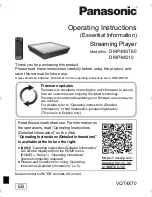
Direct Addressing
5-3
Addressing Modes
5.3
Direct Addressing
Direct addressing is so named because the value to be stored in memory is
obtained by directly retrieving it from another memory location. For example:
MOV A,30h
This instruction will read the data out of internal RAM address 30
H
(hex) and
store it in the accumulator (A).
Direct addressing is generally fast because, although the value to be loaded
is not included in the instruction, it is quickly accessible due to it being stored
in the MSC1210 internal RAM. It is also much more flexible than immediate
addressing because the value to be loaded is whatever is found at the given
address, which may change.
Additionally, it is important to note that when using direct addressing, any in-
struction that refers to an address between 00
H
and 7F
H
is referring to internal
RAM. Any instruction that refers to an address between 80
H
and FF
H
is refer-
ring to the SFR control registers that control the MSC1210 itself.
The obvious question that may arise is “if direct addressing an address from
80
H
through FF
H
refers to SFRs, how can I acess the upper 128 bytes of inter-
nal RAM that are available with the MSC1210?” The answer is: it cannot be
accessed using direct addressing. As stated, if an address of 80
H
through FF
H
is directly referred to, it refers to an SFR.
However, the upper 128 bytes of RAM of the MSC1210 can be accessed by
using the next addressing mode, indirect addressing.
















































